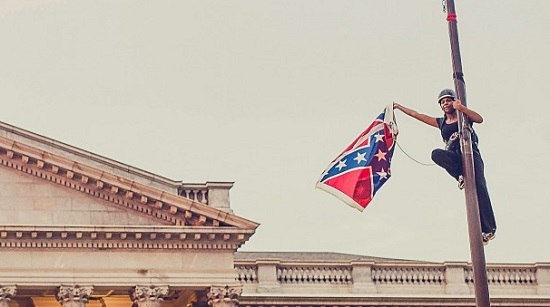
The short answer is: very much. The United States as a whole, and in particular the states in the south that were part of the attempted secession in 1861 called the Confederacy, have been embroiled in a passionate debate for several weeks now. On June 17, a young man named Dylaan Roof, a self-avowed White supremacist, killed eight persons and wounded many others at the Emanuel AME church, a historic Black church in Charleston, South Carolina. Among the dead was the pastor, the Rev. Clementa C. Pinckney, who was a member of the South Carolina State Senate.
Violence against Black persons is not unusual throughout these states. It has indeed been frequent and rarely punished seriously. What has also been true in the states of the former Confederacy is the persistent use in legal symbols of the flag of the Confederacy. It was used as part of state flags and as part of state automobile license plates. There were many statues on state grounds of persons prominent in the secession.
Many people, especially in the Black population, have long argued that these symbols were racist and actually encouraged the frequent violence. They called for removing these symbols. However, for over a century, such calls were not only not heeded but actively denounced. The leading voice to retain these symbols was an organization called the Sons of Confederate Veterans (SCV).
The SCV asserted that these symbols merely honored the sacrifices of the individuals who fought in the war. This group held such great sway in these states that the whole issue had long been considered the third rail of politics in these states. Any White legislator who called for removing the symbols was sure to be defeated at the subsequent election.
Something astonishing happened now. The slaughter was so egregious and so obviously motivated by racism that major political leaders in South Carolina and throughout the neighboring states ignored the “third rail” and called for the removal of the symbols. And, rather swiftly, this occurred throughout these states.
The scene then passed to the national legislature, where many called for removing all the symbols honoring figures of the Confederacy from all structures controlled by the federal government. This is now being deliberated.
Lest one think that such a debate about symbols is solely a USA phenomenon, let us remember the large number of quite recent such debates elsewhere. In Ukraine, the Lyiv government has had a major debate about the inclusion of symbols that referred to the fascist government of Stepan Bandera. The same defense of such symbols was offered here, that the symbols predated Bandera and actually referred to a traditional Ukrainian flag of very long ago.
In Russia, there is a debate about reopening to public view Lenin’s tomb. In Venezuela, the opposition complains of the many uses by the government of symbols referring to Hugo Chavez. In France, the kind of headwear women may use in public has been a constant debate for at least the last twenty years. This French debate has now spread to many other countries of northern Europe. In Spain, there has been a debate about the remaining symbols referring to the Franco era. In India, Prime Minister Narendra Modi has called for practice of yoga, which many consider a way of promoting Hindu values and pre-eminence. And one could go on.
It is very clear that flags and other symbols are never neutral terrain. They matter, and people know that they matter. But why do they matter? It is because symbols create attitudes as much as, or quite possibly more than, attitudes create (or are reflected in) the symbols.
Flags and other symbols are major socializing instruments of children. Children learn what they are supposed to believe from these symbols. Adults are reminded by these symbols of what they are supposed to believe. Groups feel justified in excluding (even killing) members who do not conform to the recognition of these symbols.
So yes, symbols matter. The next question is whether changing the symbols matter. Now that the flag of the Confederacy no longer flies in South Carolina, is there less racism? Will there be less violence against the Black population? Quite possibly not, in the short run. The racism may be more covert, but no less real. So why then bother about changing the symbols? Because it may matter in the longer run. It is a part of a continuing struggle about the world in which we live and hope to build. It is only a part of the struggle. But it needs to be pursued because it is an indispensable part of the struggle.
That brings us to the last danger. It is all too easy in the struggle against one noxious set of symbols to install in our collective value system another noxious set of symbols. There is no magic formula in the real world where many groups are struggling for their place in the sun, and we are all members of multiple, overlapping groups. We have to find the space for reasonable compromises about symbols.
